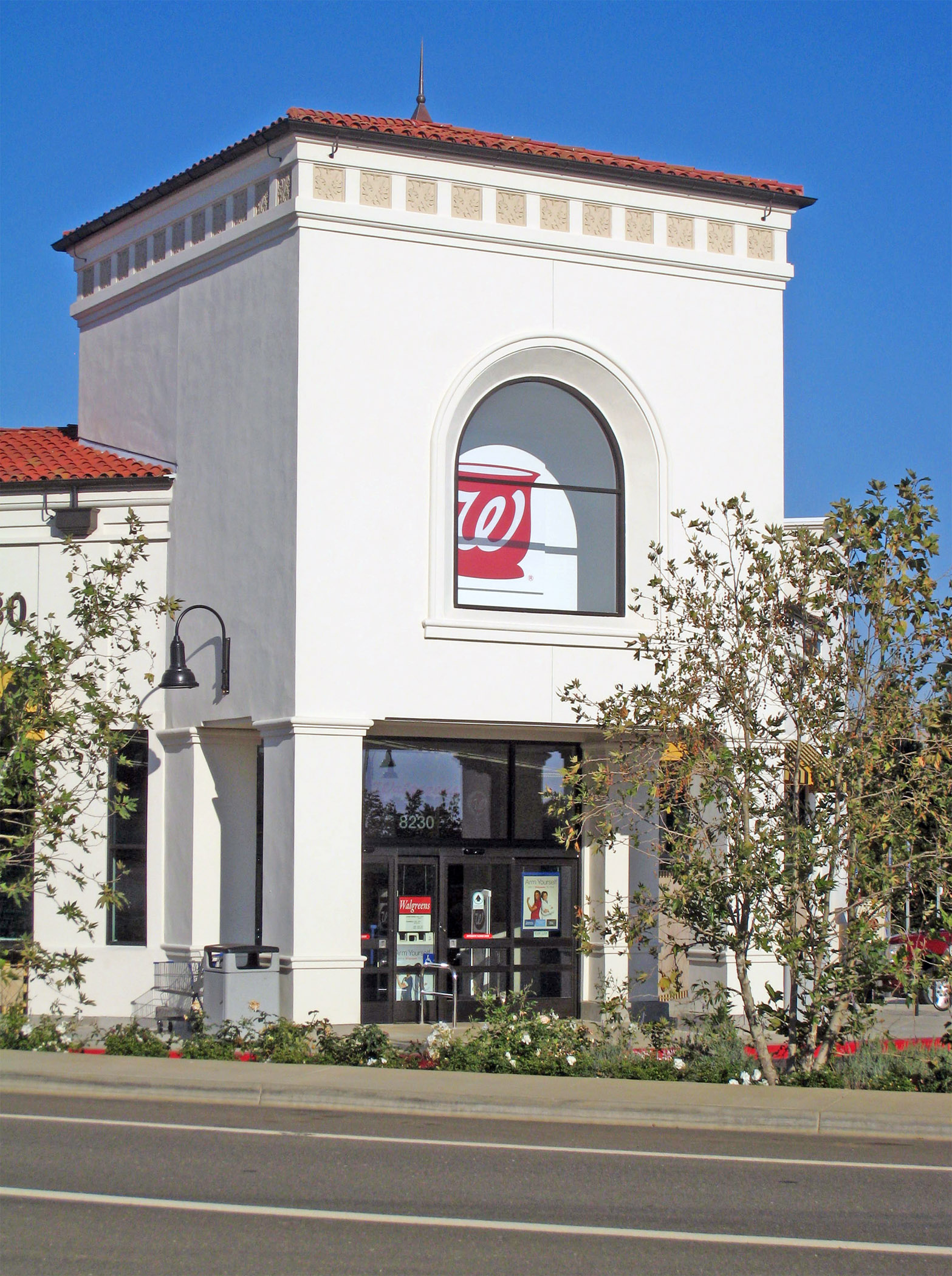A new Walgreens store that recently opened in California provides a regionally specific look, which was required by the land owner, Serrano Development, and local jurisdictional authorities.
The El Dorado Hills' Walgreens was designed in the Santa Barbara style, which is composed of a traditional arched entry and towers with medallion sand scroll element accents, vaulted clay-tile roofs, smooth-finish plaster walls with ceramic tile accent bands, fabric awnings, custom wrought iron detailing and on-site pergolas with custom columns and trellis to give a human scale to the site landscaping.
The structure's exterior is a major departure from the corporate image of a traditional Walgreens design; however, it is in context with the design of the other retail buildings planned for The Shops. Walgreens was supportive of the unique design requirements.
The store was developed for Walgreens by BENCOR, LLC of Colorado Springs, CO. CSHQA provided local site support, in coordination with TSD Civil Engineers; design and construction documents and administration for the team which included BENCOR, Pete Navarro and Serrano Development. BD+C
Related Stories
| Aug 9, 2022
Work-from-home trend could result in $500 billion of lost value in office real estate
Researchers find major changes in lease revenues, office occupancy, lease renewal rates.
| Aug 9, 2022
5 Lean principles of design-build
Simply put, lean is the practice of creating more value with fewer resources.
| Aug 9, 2022
Designing healthy learning environments
Studies confirm healthy environments can improve learning outcomes and student success.
Legislation | Aug 8, 2022
Inflation Reduction Act includes over $5 billion for low carbon procurement
The Inflation Reduction Act of 2022, recently passed by the U.S. Senate, sets aside over $5 billion for low carbon procurement in the built environment.
| Aug 8, 2022
Mass timber and net zero design for higher education and lab buildings
When sourced from sustainably managed forests, the use of wood as a replacement for concrete and steel on larger scale construction projects has myriad economic and environmental benefits that have been thoroughly outlined in everything from academic journals to the pages of Newsweek.
AEC Tech | Aug 8, 2022
The technology balancing act
As our world reopens from COVID isolation, we are entering back into undefined territory – a form of hybrid existence.
Legislation | Aug 5, 2022
D.C. City Council moves to require net-zero construction by 2026
The Washington, D.C. City Council unanimously passed legislation that would require all new buildings and substantial renovations in D.C. to be net-zero construction by 2026.
Cultural Facilities | Aug 5, 2022
A time and a place: Telling American stories through architecture
As the United States enters the year 2026, it will commence celebrating a cycle of Sestercentennials, or 250th anniversaries, of historic and cultural events across the land.
Sponsored | | Aug 4, 2022
Brighter vistas: Next-gen tools drive sustainability toward net zero line
New technologies, innovations, and tools are opening doors for building teams interested in better and more socially responsible design.
| Aug 4, 2022
Newer materials for green, resilient building complicate insurance underwriting
Insurers can’t look to years of testing on emerging technology to assess risk.

















